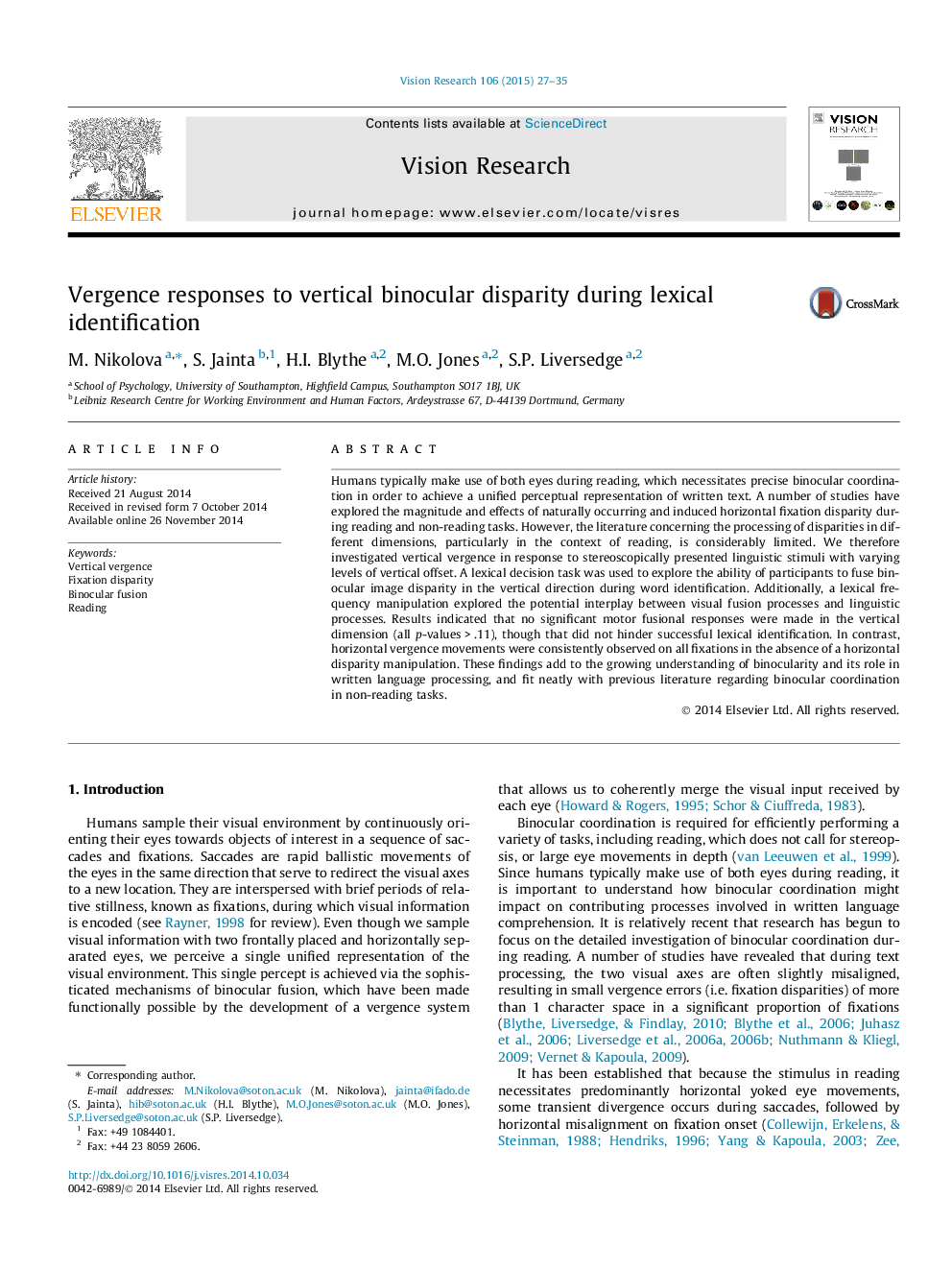| Article ID | Journal | Published Year | Pages | File Type |
|---|---|---|---|---|
| 4033681 | Vision Research | 2015 | 9 Pages |
•Vertical disparity was induced in single words during a lexical decision task.•The vertical vergence system did not respond to small degrees of vertical disparity.•Differences were observed between horizontal and vertical vergence responses.•Lexical processing remained unhindered by the different disparity presentations.
Humans typically make use of both eyes during reading, which necessitates precise binocular coordination in order to achieve a unified perceptual representation of written text. A number of studies have explored the magnitude and effects of naturally occurring and induced horizontal fixation disparity during reading and non-reading tasks. However, the literature concerning the processing of disparities in different dimensions, particularly in the context of reading, is considerably limited. We therefore investigated vertical vergence in response to stereoscopically presented linguistic stimuli with varying levels of vertical offset. A lexical decision task was used to explore the ability of participants to fuse binocular image disparity in the vertical direction during word identification. Additionally, a lexical frequency manipulation explored the potential interplay between visual fusion processes and linguistic processes. Results indicated that no significant motor fusional responses were made in the vertical dimension (all p-values > .11), though that did not hinder successful lexical identification. In contrast, horizontal vergence movements were consistently observed on all fixations in the absence of a horizontal disparity manipulation. These findings add to the growing understanding of binocularity and its role in written language processing, and fit neatly with previous literature regarding binocular coordination in non-reading tasks.
